
Unterrichtspraxis-Teaching German
Scope & Guideline
Championing Effective Strategies for German Language Acquisition
Introduction
Aims and Scopes
- Innovative Pedagogy:
The journal emphasizes the exploration of innovative teaching methodologies, particularly those that leverage technology and contemporary cultural themes to enhance language learning. - Multiliteracies and Diverse Texts:
A core focus is on multiliteracies approaches, encouraging the use of diverse texts and media formats such as graphic novels, music, and virtual reality to engage students in language acquisition. - Cultural Competence and Inclusivity:
The journal promotes teaching practices that foster intercultural competence and inclusivity, addressing historical and contemporary social issues within the German context. - Research-Based Practices:
An emphasis on research-informed practices is central, with articles often presenting empirical studies and analyses that contribute to the field of language education. - Collaboration between Educational Levels:
The journal highlights the importance of partnerships between K-12 and higher education systems to enhance language learning opportunities and retention.
Trending and Emerging
- Technology Integration in Language Learning:
There is a significant trend towards the incorporation of technology in language education, particularly with the rise of generative AI and online learning platforms that enhance learner engagement. - Social Justice and DEIA (Diversity, Equity, Inclusion, and Accessibility):
Emerging themes focus on social justice, with many articles addressing DEIA principles within the language curriculum, reflecting a broader societal push for inclusivity. - Interdisciplinary Approaches:
The journal is increasingly featuring interdisciplinary approaches that connect language learning with other fields such as music, theater, and environmental studies, promoting a holistic educational experience. - Mental Health and Well-Being in Education:
Recent themes emphasize mental health literacy and well-being, highlighting the importance of emotional support in language learning environments, particularly post-pandemic. - Global Perspectives and Decolonization:
There is a notable increase in discussions around global perspectives and decolonization in language education, encouraging educators to rethink traditional narratives and practices.
Declining or Waning
- Traditional Grammar Instruction:
There seems to be a waning interest in traditional grammar-focused methodologies, as newer approaches emphasize meaning-making and communicative competence over rote grammar learning. - Narrow Cultural Approaches:
There is a noticeable decline in articles dedicated to narrow cultural representations, with a shift towards more inclusive and diverse cultural narratives that reflect current societal dynamics. - Static Curriculum Models:
The journal has moved away from static curriculum models, which previously dominated discussions, in favor of more dynamic, flexible approaches that respond to student needs and contemporary issues. - Focus on Historical Context Alone:
The emphasis on historical contexts in language teaching appears to be declining, as there is a growing need for relevance to modern societal issues and student experiences.
Similar Journals

Journal of Teaching English for Specific and Academic Purposes
Navigating the Future of English for Specific Purposes.Journal of Teaching English for Specific and Academic Purposes, published by UNIV NIS, FAC SCI MATH, is a pivotal platform for researchers, educators, and practitioners in the field of language education, particularly focusing on specialized and academic English instruction. With an ISSN of 2334-9182 and an E-ISSN of 2334-9212, this journal serves as a conduit for innovative research and pedagogical advancements from 2019 to 2024, contributing significantly to the understanding of language teaching methodologies. As a recognized entity in the Q3 category of Education as per 2023 evaluations, it ranks #1071 in Scopus’s social sciences education realm, indicating its growing influence and relevance. Although it operates without open access, the journal aims to provide a comprehensive exploration of effective teaching strategies and academic practices, crucial for both current scholars and institutions. The journal welcomes diverse contributions that shed light on the evolving landscape of English language teaching, making it an essential resource for those striving to enhance their knowledge and practice in this important area.

Recherche et Pratiques Pedagogiques en Langues de Specialite-Cahiers de l Apliut
Bridging Theory and Practice in Language Education.Welcome to Recherche et Pratiques Pedagogiques en Langues de Specialite-Cahiers de l Apliut, a distinguished journal published by the ASSOC PROFESSEURS LANGUES IUT-APLIUT in France. Focused on the critical intersection of education and linguistics, this journal aims to disseminate innovative research and practices in the field of specialized languages and pedagogy. With its ISSN 2257-5405 and E-ISSN 2119-5242, it serves as a vital platform for educators, researchers, and students to explore effective teaching methodologies and language acquisition strategies. The journal has garnered recognition in various categories, currently ranked Q4 in Education and Q3 in Linguistics and Language for 2023, highlighting its emerging contribution to the field. Although it operates without an open access option, its focused studies and implications for educational practices ensure that critical insights are accessible to professionals seeking to enhance their understanding and application of language education. Join a community committed to advancing pedagogical approaches in specialized languages through the insights provided in this journal, bridging theoretical frameworks and practical applications from 2011 to 2019 and continuing from 2021 to 2024.
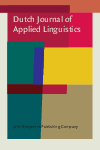
Dutch Journal of Applied Linguistics
Unlocking Insights in Applied LinguisticsWelcome to the Dutch Journal of Applied Linguistics, a premier open-access publication dedicated to advancing the field of applied linguistics. Published by openjournals.nl and based in the Netherlands, this journal has been committed to disseminating innovative research since its inception in 2012, gaining recognition within the academic community for its rigorous scholarship and high standard of publications. With an impressive Q1 ranking in both the Linguistics and Language category and a commendable percentile standing in Scopus, the journal provides an essential platform for researchers, professionals, and students alike to explore the latest findings and developments in language studies. As an open-access journal since 2021, it ensures that valuable knowledge is freely accessible to a worldwide audience, fostering collaboration and enhancing the impact of research in this dynamic field. The Dutch Journal of Applied Linguistics invites you to contribute and engage with cutting-edge scholarship that shapes the future of language use and learning.

Latin American Journal of Content & Language Integrated-LACLIL
Fostering Language Mastery Through Integrated LearningThe Latin American Journal of Content & Language Integrated-LACLIL, published by UNIV SABANA, FAC ENFERMARIA, is a pioneering open-access journal that has been serving the academic community since 2008. With an aim to foster the integration of content and language learning, LACLIL is a crucial resource for researchers, educators, and students interested in the intersection of linguistics, education, and bilingualism within the Latin American context. By promoting high-quality scholarly articles, this journal not only enhances understanding and practice in Content and Language Integrated Learning (CLIL) but also contributes to the discourse surrounding effective teaching methodologies. LACLIL encourages contributions that deepen insights into pedagogical strategies and curricular development, making it an essential platform for professionals dedicated to advancing language education in diverse cultural settings.
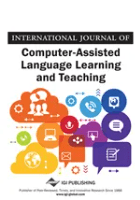
International Journal of Computer-Assisted Language Learning and Teaching
Enhancing learning experiences through technology.Welcome to the International Journal of Computer-Assisted Language Learning and Teaching, a premier publication by IGI Global dedicated to advancing the interdisciplinary research at the intersection of linguistics, education, and computer science. With an ISSN of 2155-7098 and an E-ISSN of 2155-7101, this journal aims to provide a platform for innovative studies on the implementation and effectiveness of technology in language learning and teaching. The journal has earned notable recognition within its field, securing a Q1 ranking in Linguistics and Language and strong placements across several categories in the 2023 Scopus Ranks, including a Q3 classification in Computer Science Applications and Computer Vision and Pattern Recognition. Researchers and educators are encouraged to contribute their findings to foster dialogue around effective computer-assisted methodologies and instructional practices. Although the journal is not open access, it remains a vital resource for researchers, professionals, and students seeking to enhance the efficacy of language education through technological innovation.
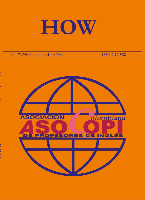
How-A Colombian Journal for Teachers of English
Cultivating a Community of Passionate Educators.How: A Colombian Journal for Teachers of English is a prestigious, peer-reviewed publication dedicated to advancing the field of English language teaching in Colombia and beyond. Established by the ASOC COLOMBIANA PROFESORES INGLES, this journal has embraced an Open Access model since 2014, ensuring that innovative research and teaching methodologies are accessible to a global audience. With a focus on pedagogical strategies, curriculum development, and language acquisition, How aims to foster community among educators, researchers, and practitioners dedicated to improving English language instruction. The journal's commitment to high-quality scholarship and practical applications makes it an indispensable resource for professionals seeking to enhance their teaching practices. Housed in Bogotá, Colombia, How reflects the dynamic landscape of English education in Latin America, contributing significantly to both regional and international discourse.

Chuzhdoezikovo Obuchenie-Foreign Language Teaching
Elevating Standards in Language AcquisitionIntroducing Chuzhdoezikovo Obuchenie - Foreign Language Teaching, a prominent journal published by NATSIONALNO IZDATELSTVO AZ BUKI, dedicated to the field of foreign language education. With its ISSN 0205-1834 and E-ISSN 1314-8508, this journal aims to provide a comprehensive platform for researchers, educators, and practitioners to share insightful studies, innovative methodologies, and transformative practices in language teaching. The journal is based in Sofia, Bulgaria and is strategically positioned to contribute to the discourse on language acquisition and pedagogy, targeting a global audience interested in enhancing foreign language competencies. Although specific impact factors and H-index data may be unavailable, the journal's commitment to quality and relevance in the field is evident through its rigorous peer-review process, ensuring that published works meet high academic standards. Emphasizing accessibility and inclusivity, Chuzhdoezikovo Obuchenie invites submissions that reflect contemporary challenges and advancements in language education, making it an essential resource for anyone invested in the future of multilingual instruction.

DDS-Die Deutsche Schule
Fostering Global Dialogue in Educational ResearchDDS-Die Deutsche Schule is a distinguished academic journal published by WAXMANN VERLAG GMBH, focusing primarily on educational research and practices within German schools. Since its transition to Open Access in 2021, the journal has aimed to enhance the accessibility of valuable research findings, fostering a global exchange of ideas among researchers, educators, and policy-makers. With its ISSN 0012-0731, DDS serves as an essential resource in the field of education, providing a platform for scholarly articles that explore innovative pedagogical approaches, curriculum development, and educational policy. The journal not only contributes to the academic discourse but also emphasizes practical implications for teaching and learning in contemporary educational settings. Researchers and practitioners from diverse backgrounds will find DDS to be a vital tool for advancing their understanding and engagement with the evolving educational landscape.
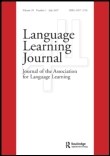
Language Learning Journal
Fostering global dialogue in language learning advancements.Welcome to the Language Learning Journal, a premier resource for researchers, educators, and linguists alike, published by Routledge Journals, Taylor & Francis Ltd. With a proud history dating back to 1990 and commitment to advancing the exploration of language acquisition, this esteemed journal boasts an impressive impact factor within Q1 rankings across both the Education and Linguistics and Language categories. Ranked #40 in Language and Linguistics and achieving a 96th percentile in the Arts and Humanities, the journal serves as a crucial platform for disseminating cutting-edge research, innovative methodologies, and impactful discussions in the field of language learning. Although currently not offered as an open access publication, the depth and quality of content ensure significant contributions to the body of knowledge for professionals and scholars. With its global reach, the Language Learning Journal is dedicated to fostering the development and understanding of language learning processes, enabling readers to stay informed about the latest trends and findings through rigorous peer-reviewed articles.
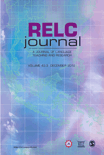
RELC Journal
Challenging Perspectives, Inspiring Change in Language EducationRELC Journal, published by SAGE Publications Ltd, stands as a leading platform in the fields of Education and Linguistics, boasting an impressive Q1 ranking in both categories according to the latest metrics. Established in 1970 and continuing its commitment to academic excellence through 2024, the journal features rigorous peer-reviewed research that explores the intersections of language, culture, and pedagogy. With a notable Scopus ranking that places it in the 98th percentile for both Language and Linguistics (Rank #16/1088) and Education (Rank #91/1543), the RELC Journal is essential for scholars, educators, and practitioners seeking to contribute to and stay abreast of cutting-edge developments in their respective fields. Although currently not open access, the journal remains accessible to a diverse audience and invites contributions that challenge conventional perspectives and inspire innovative practices in language education.